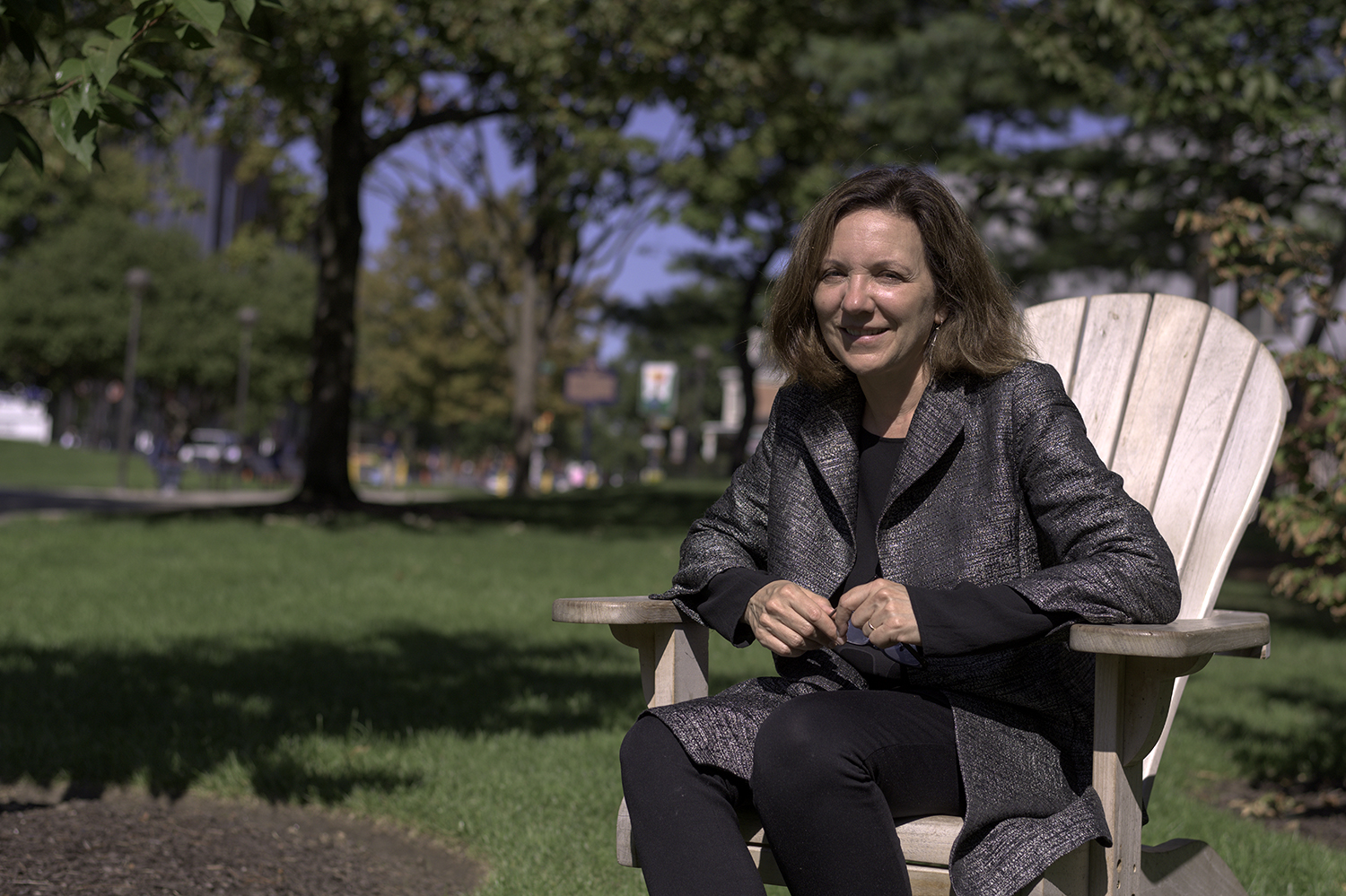Nancy Trainer
Building inclusion one relationship at a time

University Architect and Associate Vice-President, Facilities
Nancy Trainer has been leading Drexel’s campus design efforts for three years, having come from private practice as a principal in planning and design for college and university campuses. A current member of the Philadelphia City Planning Commission and Chair of Philadelphia’s Civic Design Review, she possesses an architect’s ability to listen to diverse voices and make sure everyone is heard. She was attracted to Drexel by its mission of “preparing each new generation of students for productive professional and civic lives while also focusing collective expertise on solving society’s greatest problems.” She describes it as “a modern university, positively urban and in transition” to becoming ever more inclusive.
Trainer’s team does planning, design, and construction for Drexel’s Center City, University City, and Queen Lane campuses, managing a range of smaller renovation projects such as labs and writing studios to major projects like the current expansion and redesign of the Korman Center, a campus building, along with its surrounding public space. Anything that needs professional design services, her department manages: some projects high-profile; others, less so. Their projects are not large-scale, but as Trainer points out: “the flip side is positive. We start smaller, but we can help smaller companies build their capacity,” referring to the design firms who win bids for campus renovation jobs.
Trainer sees one aspect of her role as being “to encourage structural change,” opening up access to campus construction and renovation projects to a more diverse group of sub-contractors and firms. She thinks about this part of her work in two dimensions: bringing diversity to campus construction and renovation projects, and bringing diversity to her profession. So the question arises: how to attract more new blood into the field of architecture and how to prepare a larger community pool for a more diverse future? There are currently eleven on her staff, and with half of those being women and one-quarter minority members, she feels it is more diverse than private design companies of comparable size.
The department that Trainer leads is involved with procurement, design, and commissioning contracting firms for campus construction projects. One innovation that her office has experimented with is establishing a longer-term relationship with a single general contractor to handle all on-campus renovation projects. A campus construction model with a great deal of potential, the relationship was designed around the goal of meeting elevated expectations for minority and local participation in these renovation projects. Some of the features of the arrangement included:
-
A local presence, with an office set up in the neighborhood for accessibility
-
Hiring preference for trades workers from local zip codes
-
Goals for inclusion written into contracts at all levels
-
Bonus incentives for meeting or exceeding inclusion goals
-
Evaluation of the model suggests that it holds a good deal of promise for an on-campus construction inclusion agenda.
Having a background in planning as well as in architecture helps Trainer bring different information together in a way that supports good decisions about campus space. Her job, as she sees it, is “to bring great design, on schedule, within budget” to Drexel University. With so many stakeholders she knows it is not possible to please everyone, so she must keep the mission in mind, along with upholding her standards of integrity, while behaving with transparency and authenticity. Success for her involves more than just money trading hands, but requires a careful consideration of what is the “right fit” between what a design firm offers and what Drexel needs.
For example, the Perelman Plaza renovation project alongside One Main Building creates open space, provides shade, offers stormwater management, and its principal designer lives in the nearby Powelton Village neighborhood. This same designer is responsible for the Korman Quad project, which emphasizes environmental sustainability.
Trainer tries to know other organizations in the city. She talks to peers at other institutions, compares notes, and gets out of her own silo. She will take time to meet with almost anybody who wants to work with her group; her calendar often features 8:00 a.m. meetings at the coffee shop on campus to hear what potential collaborators have to offer and to give constructive feedback.
One of the major changes she is part of implementing over the last few years at Drexel is “a more direct aim to make the University a more welcoming campus, physically better for everyone, both university and community, for the benefit of all.” For example, the physical grounds are not gated, in an effort to make the public realm more welcoming. Fences are “out” at campus locations like the small sports field at the corner of 33rd and Arch; while inviting trees, tables and chairs are “in.” This physical, open accessibility is a visual and spatial reflection of the larger efforts toward inclusion across the University.
To others in institutions considering taking on an engaged-anchor approach, Trainer advises being transparent, adopting the idea that “we can always do better” as an institution. Recognizing that “the work takes intention,” she urges, “find good partners: good business partners and good community partners.” The start to a transformation can be simple, as simple as placing a few chairs underneath a tree. Change can start small, with nothing more than a conversation; but authenticity-- from the heart and passion—can evoke a fabulous response.
Trainer says: “Being thoughtful about the small things can have a great impact.” In weighing how we are affecting the community, the benefits and the risks: “Come together. Learn to trust. Build upon good intentions.”
“The bigger the world, the more inclusive a world, the better.”